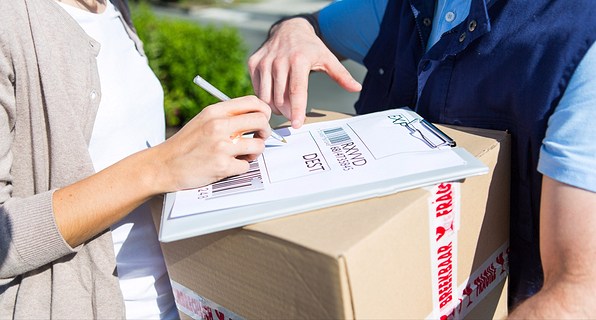Postal services have been linking together regions and nations, made communication possible long before the emergence of any technological device and have been a crucial part of economic activity and development. Even today, under its various forms, be it private or state-owned, whether it makes use of bikes, cars or drones to deliver, each of us has been expecting a package or delivery at least once this year.
While mail (letters) volumes are decreasing globally, global e-commerce is on a rise, driving up the volume of parcels sent. This, coupled with digitization brings both challenges and opportunities to the postal market.
As internet is driving growth, the power shifts to the consumer as they ask for a seamless experience from the moment they order the product to the one they sign to receive their delivery. The customer’s ability to choose the delivery time and point puts pressure on the “last-mile” delivery to be fast and efficient. The ability to bundle up several types of products together (ordering both a book and a shirt from the same e-retailer) reduces yields per package. Consumers make good use of the option to review a (postal)company, so the task of maintaining customer satisfaction high cannot be overlooked. What are the options postal services worldwide can explore to stay competitive and relevant?
Know and use your data
On-time delivery across borders is still a key value proposition that many postal services still struggle to honor. To give a personal example, I have recently ordered a book from Amazon DE with an expected delivery time of 4 days, 2 weeks later and I’m still waiting to hear back from the neighboring country. By using an analytical model and not “current practices in the industry”, a postal company found out that its poor performance on international deliveries was due to the fact that the packages handed in to carriers early would often be forgotten in a “holding area” while the “late” packages would be quickly rushed on the next plane. When parcels were delivered at the right time to the carriers (by using insights from the analytical model), performance on delivery-times went up. Hence, knowing and making use of your data to optimize your operations is just the beginning of a promising relationship between postal services and technology.
Postal carriers are everywhere and have the capabilities to gather more data that could be monetized, while delivering packages. Examples include measuring phone signal coverage or air quality and sell the gathered data to interested stakeholders such as phone carriers, real estate companies or governments. This allows postal services to go into new business models and capture more value, all while still delivering packages on time.
The notions covered in this post are just to give a broad overview on the vast options for improvement that are made available for postal services due to technological progress. Innovations worth looking deeper into are dynamic routing based on real time traffic reports, options to deliver the package or fresh groceries in the customer’s car-trunk (see the collaboration between Audi, DHL and Amazon) or using AI to sort out packages.
Sources
Accenture (2014), ‘Data Is The New Black for Postal Transformation’, Accenture, accessed online at <https://www.accenture.com/t20150824T041117__w__/ca-en/_acnmedia/Accenture/Conversion-Assets/DotCom/Documents/Global/PDF/Industries_14/Accenture-Data-New-Black-Postal-Transformation.pdf>
Trimble, J. (2016), ‘Postal Service Development Requires ICT and Big Data’, Industrial Engineering Department Tshwane University of Technology Pretoria, accessed online at <https://www.admiusa.org/admi2016/Papers_Faculty/ADMI2016_Trimble.pdf>
Accenture (2015), ‘Adding Value to Parcel Delivery’, Accenture, accessed online at <https://drive.google.com/drive/u/0/folders/0B3bgDmaQyLN0WE00ZEpwel82UVU>
Postalvision 2020 (n.a), ‘Big Data Analytics and Applications for the Post’, Postalvision, accessed online at <http://www.postalvision2020.com/wp-content/uploads/2015/03/The-Big-Data-Analytics-and-Applications-for-Posts-and-The-Internet-of-Postal-Things.pdf>

